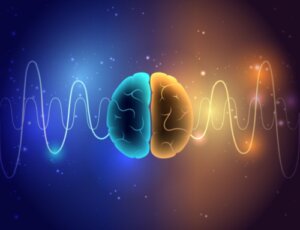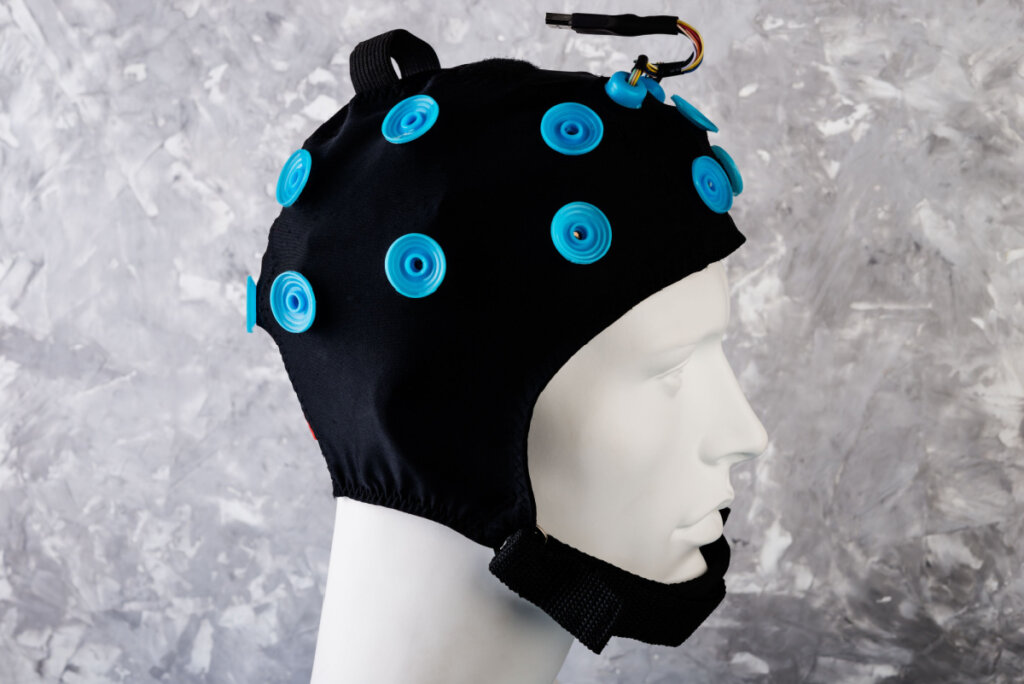Neurofeedback for Treating Depression


Written and verified by the psychologist Gorka Jiménez Pajares
Biofeedback techniques and, more specifically, neurofeedback, use instruments that provide data, almost immediately, on brain activity. They give information (feedback) in real-time about the brain waves that appear in the individual. In this article, we’re going to talk about its suitability in treating depression since the number of people suffering from this disorder is increasing exponentially.
In fact, the WHO (2020) considers depression to be one of the epidemics of the 21st century. Indeed, it’s probably the most prevalent clinical entity. In addition, it’s suffered by people of all ages, although it does seem to particularly affect the older population. Data suggests that 20 percent of the world’s population will suffer from depression throughout their lives.
“Depression is a prison where you are both the suffering prisoner and the cruel jailer.”
Dorothy Rowe

An approach to the concept of depression
According to the ICD-11 (WHO), the system that classifies different diseases, depression is a period of at least two weeks characterized by a depressed mood practically every day. It’s accompanied by a lack of interest in daily activities. Among the symptoms are the following:
- Feeling worthless.
- Feeling guilty.
- Feelings of hopelessness.
- Frequently thinking about death or suicide.
- Alterations in appetite and sleep patterns.
- Agitated or slowed motor behaviors.
- Fatigue, tiredness, and decreased energy.
For Belloch (2022), when evaluating this clinical picture, two symptoms must be taken into account: sadness and anhedonia. This last symptom consists of difficulty in experiencing pleasure or interest in things that the depressed individual used to enjoy.
“In a state of depression, a patient may make hasty decisions, and the clinician should advise him to postpone any crucial decisions until he is in remission.”
-Amparo Belloch-
Neurofeedback
Neurofeedback is a training method. It allows the individual to obtain precise and real-time information from their brain waves. This is done using an electroencephalogram (EEG) or magnetic resonance imaging (fMRI). Thanks to the information that the patient collects about themselves, they can learn to regulate their brain waves in order to feel better.
The procedure involves electrodes being placed on the patient’s head to obtain the information. The data is subsequently processed by a computer and sent to a monitor that provides visual and auditory signals. These signals constitute the feedback that’s used by the patient.
The objective of neurofeedback training is for the patient to be able to increase and reduce the brain activity that appears on the monitor. In effect, to self-regulate.
“Cortical areas of the brain produce different rhythms, which are observed as signals from an electronic recording, or EEG.”
-Alexandra Fajardo-
A new study on the use of neurofeedback for depression
Recent research conducted by Dr. David Linden has provided new data on this type of intervention. He claims it’s a priority to increase the efficacy, efficiency, and safety offered by the interventions currently available.
This is urgent because, as mentioned earlier, the number of cases of depression is growing exponentially. However, the specialized resources that people have at their disposal aren’t increasing in the same way.
Neurofeedback using EEG for treating depression
What brain areas are related to depression? Research suggests that the left frontal cortex is involved in behaviors guided by reinforcing emotions. On the other hand, the right plays a role in behaviors guided by aversive emotions. In sufferers of depression, part of the frontal area has reduced activity compared with the non-clinical population.
The goal is to decrease alpha waves in the area of the left hemisphere of the brain and increase them in the right area, in order to balance them. Alpha waves occur at times when we’re calm. They appear when we feel relaxed and the activity of our mind is low.
The results of the application of neurofeedback in depression are promising. In fact, improvements have been found that could be superior to those of psychotherapy. That said, more research on the subject is needed.
Neurofeedback using magnetic resonance imaging for treating depression
Functional magnetic resonance imaging (fMRI) provides images of the brain regions that are active when performing a task. It’s an extraordinary way to study the networks of connections between the neurons that are activated in depression. The rationale for the technique is that if we know which networks are activated and how they’re activated, we can try to self-regulate them.
In the protocol developed by Linden (2022), areas were found that were activated by positive and negative valence stimuli. The objective of the intervention consisted of promoting activation in some determined areas. More specifically, the ventral prefrontal cortex and the limbic system.
To do this, patients visualized screens on which they could see the level of activation of the areas related to positive emotions. The aim of the training was to increase their activation through the feedback provided. Training and rest periods of 20 seconds were alternated for a total of 20 minutes.

The results
The treatment was applied in four sessions per week. At the end of the treatment, it was observed that neurofeedback helped patients to be more aware of what was happening around them, and also inside them.
Depression is one of the most limiting disorders. For this reason, new forms of intervention that facilitate recovery from this condition are being investigated. Since the results of neurofeedback have been so promising, it’s essential that research regarding this particular treatment should continue.
“The clinical effects of the pilot study were also promising. The patients in the neurofeedback group improved by about 30 percent on their symptom score over the one month trial.”
-David Linden-
All cited sources were thoroughly reviewed by our team to ensure their quality, reliability, currency, and validity. The bibliography of this article was considered reliable and of academic or scientific accuracy.
- Linden, D. E. (2022). Neurofeedback and networks of depression. Dialogues in clinical neuroscience.
- Belloch, A. (2021). Manual De Psicopatologia. Vol. I (2.a ed.). MCGRAW HILL EDDUCATION.
- Sánchez, J. P. E., Rodríguez, J. O., & Carrillo, M. X. F. (2007). Terapia psicológica: casos prácticos. Ediciones Pirámide.
- Ruiz, R. M. (2023). Manual de técnicas y terapias cognitivo conductuales. Desclee De Brouwer.
- CIE-11. (s. f.). https://icd.who.int/es
- Fajardo, A., & Guzmán, A. L. (2016). Neurofeedback, aplicaciones y eficacia. Interdisciplinaria, 33(1), 81-93.v
This text is provided for informational purposes only and does not replace consultation with a professional. If in doubt, consult your specialist.








